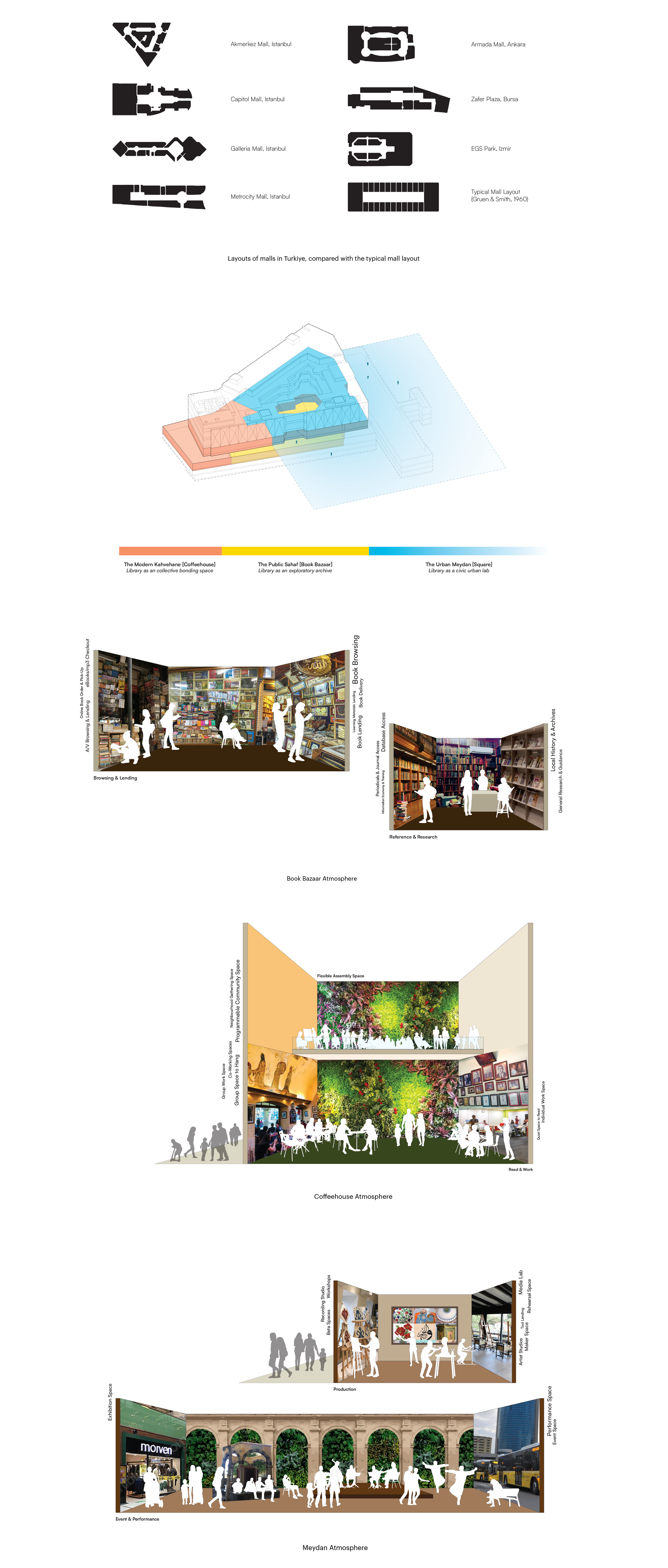The Gezi Park protests in Istanbul began as a peaceful encampment that aimed to stop the construction of a shopping centre in a public park. However, the protests soon turned into a wave of huge demonstrations, unlike any others in Turkey’s recent history. During the chaos of the protests, people organized impromptu libraries in protest areas to show resistance and support the movement. Tufekci describes this act as “libraries expressing a set of values that are aligned with the deeply held values of the protesters.” The Gezi protests focused on two significant building typologies – shopping malls and public libraries – and saw them in conflict. This thesis asks: Can Istanbul’s shopping malls be reimagined, transforming them from profit-driven to public-minded? Inspired by the Grand Bazaar, my thesis creates public commercial spaces by integrating library programs into malls. Commercial spaces in Turkey and Istanbul have been important, ever-changing structures since the Seljuk period; most of them originated from a desire for community and connections between residents, rather than, as they have become today, from solely commercial purposes. The bazaar offers a model to connect different social groups while using existing mall infrastructure. Can the bazaar come back? In its historic form, probably not. However, as our world and our needs continue to evolve, we can see new forms of bazaars combining several programs, creating a new morphology, experience and invigorating culture. In this way, the historic bazaar, with its publicness and liveliness, can drive the future of commercial spaces in Istanbul.



